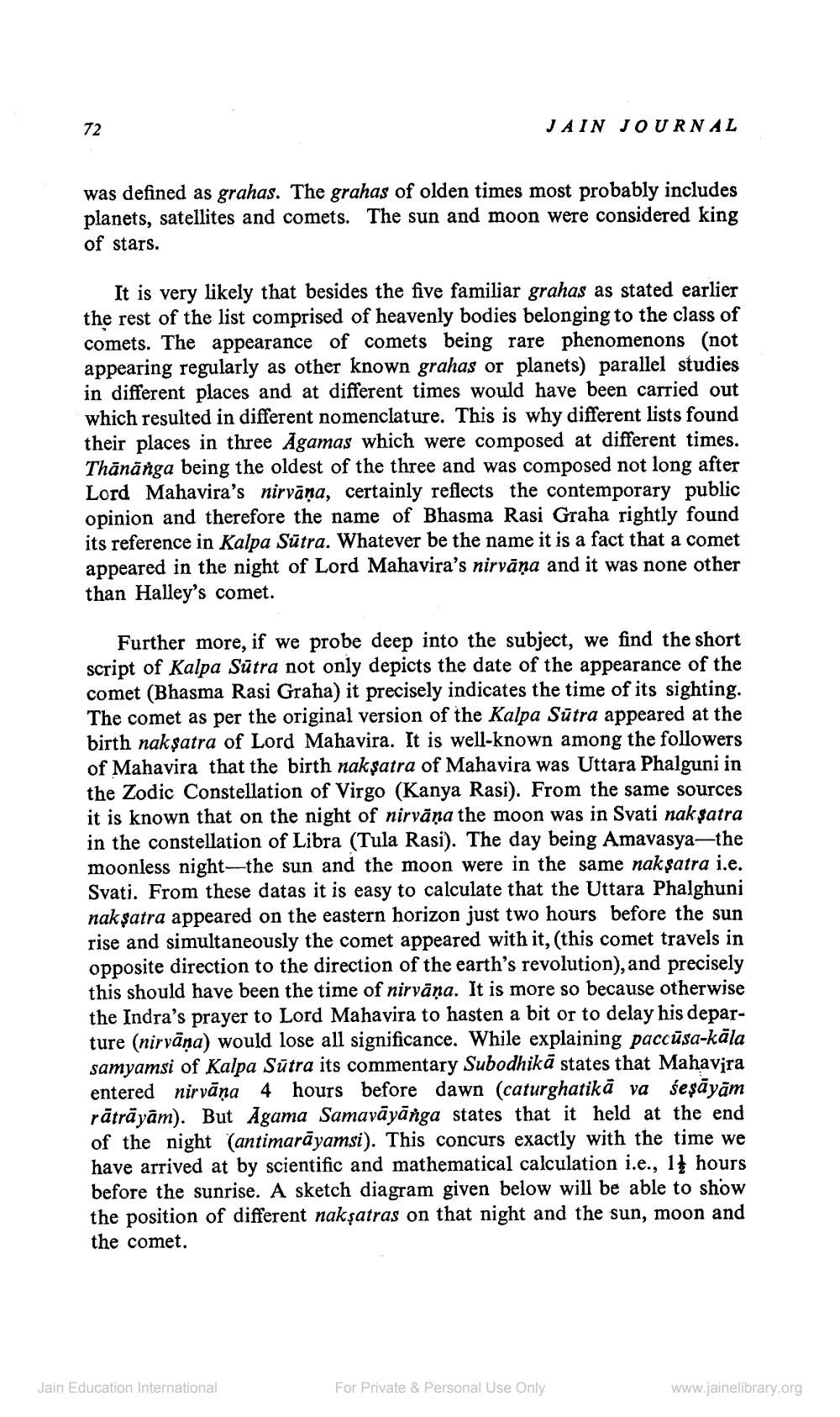________________
72
JAIN JOURNAL
was defined as grahas. The grahas of olden times most probably includes planets, satellites and comets. The sun and moon were considered king of stars.
It is very likely that besides the five familiar grahas as stated earlier the rest of the list comprised of heavenly bodies belonging to the class of comets. The appearance of comets being rare phenomenons (not appearing regularly as other known grahas or planets) parallel studies in different places and at different times would have been carried out which resulted in different nomenclature. This is why different lists found their places in three Agamas which were composed at different times. Thānānga being the oldest of the three and was composed not long after Lord Mahavira's nirvāṇa, certainly reflects the contemporary public opinion and therefore the name of Bhasma Rasi Graha rightly found its reference in Kalpa Sūtra. Whatever be the name it is a fact that a comet appeared in the night of Lord Mahavira's nirvana and it was none other than Halley's comet.
Further more, if we probe deep into the subject, we find the short script of Kalpa Sūtra not only depicts the date of the appearance of the comet (Bhasma Rasi Graha) it precisely indicates the time of its sighting. The comet as per the original version of the Kalpa Sūtra appeared at the birth nakşatra of Lord Mahavira. It is well-known among the followers of Mahavira that the birth nakşatra of Mahavira was Uttara Phalguni in the Zodic Constellation of Virgo (Kanya Rasi). From the same sources it is known that on the night of nirvana the moon was in Svati nak satra in the constellation of Libra (Tula Rasi). The day being Amavasya-the moonless night-the sun and the moon were in the same nak satra i.e. Svati. From these datas it is easy to calculate that the Uttara Phalghuni nak satra appeared on the eastern horizon just two hours before the sun rise and simultaneously the comet appeared with it, (this comet travels in opposite direction to the direction of the earth's revolution), and precisely this should have been the time of nirvāņa. It is more so because otherwise the Indra's prayer to Lord Mahavira to hasten a bit or to delay his departure (nirvāṇa) would lose all significance. While explaining paccūsa-kāla samyamsi of Kalpa Sūtra its commentary Subodhikā states that Mahavira entered nirvāņa 4 hours before dawn (caturghatikā va seṣāyām rātrāyām). But Agama Samavāyānga states that it held at the end of the night (antimarāyamsi). This concurs exactly with the time we have arrived at by scientific and mathematical calculation i.e., 11 hours before the sunrise. A sketch diagram given below will be able to show the position of different nakşatras on that night and the sun, moon and the comet.
Jain Education International
For Private & Personal Use Only
www.jainelibrary.org




